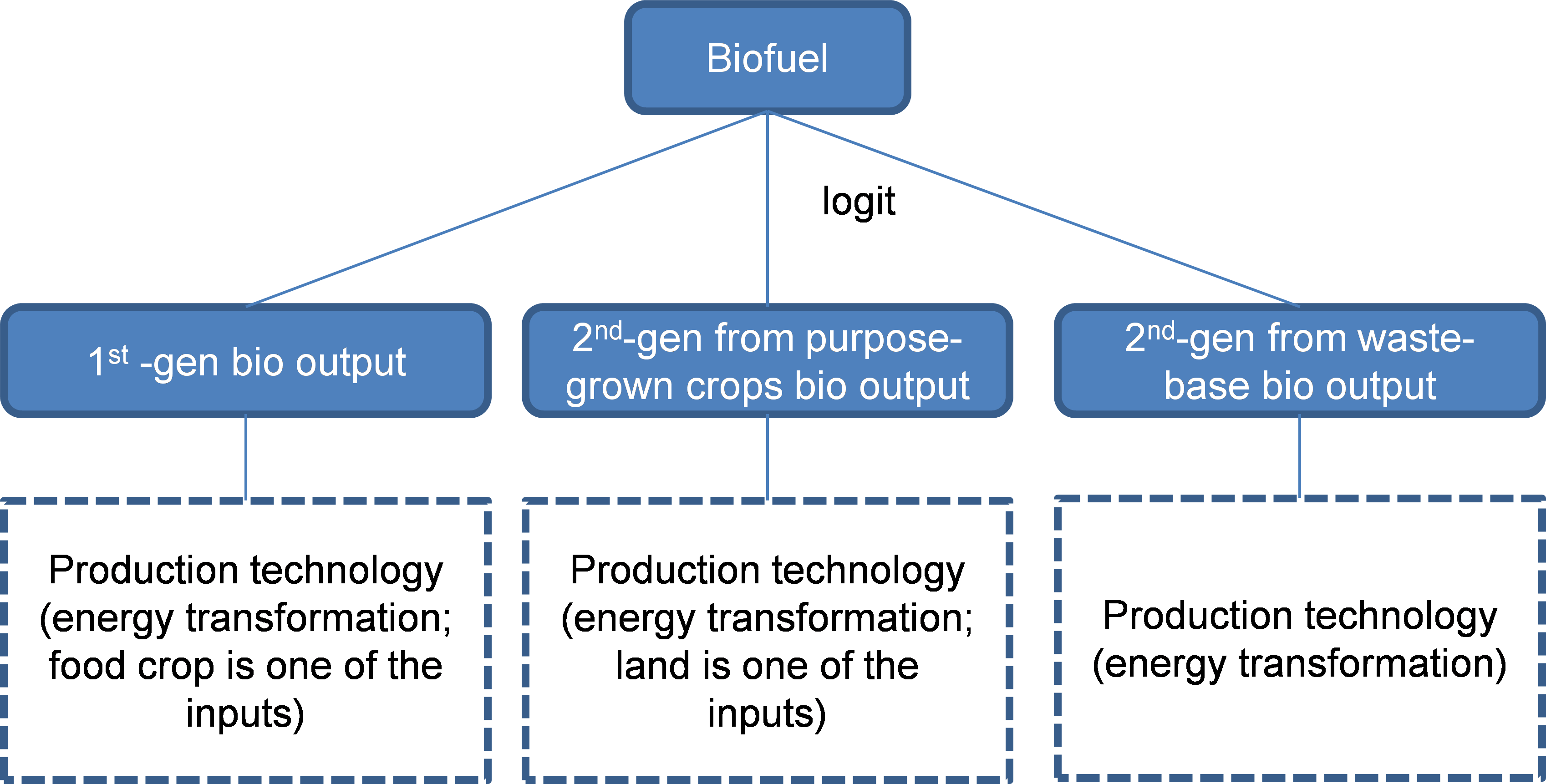Energy resource endowments - AIM-Hub: Difference between revisions
m (1 revision imported) |
No edit summary |
||
| Line 3: | Line 3: | ||
|DocumentationCategory=Energy resource endowments | |DocumentationCategory=Energy resource endowments | ||
}} | }} | ||
==Bioenergy | |||
There are two types of biomass energy, i.e., traditional and modern bioenergy. The former is mainly used in low income countries and includes wood, charcoal, crop residue, and animal manure as the main energy sources. These are usually combusted directly. The alternative is refined biomass, which is used to fuel vehicles and in power generation. The biofuel demand is addressed in section Landuse. | |||
Modern biomass energy is supplied from first- and second-generation technologies. In the former case, biomass energy is produced from cereals, sugars, and vegetable oils and can be easily extracted using conventional technology. In the latter case, energy is produced from lignocellulosic biomass or woody crops, agricultural residues, or waste. These forms of biomass make it harder to extract the required fuel under current technological limitations. This model assumes that the biomass supply is nested by using a logit function with three nodes: first-generation biofuels, second-generation biofuels from crops grown for energy-production purposes (e.g., switch grass), and wastes including crop residues, animal manure, or wood residues. The three sources are individually treated as a single production sector (Figure). | |||
[[File:38469889.png]] | |||
Each region has specific crops that are used in first-generation biofuel production. For example, Brazil uses sugarcane, whereas the US makes fuel from maize. Therefore, we assume that each region has such specific biofuel crops and that only this crop can be used for biofuel production. The first-generation biofuel production sector is assumed to input such agricultural products, and the input coefficients are derived from biomass conversion at an energy efficiency of 0.5.<br /> The second-generation biofuels made from purpose-grown energy crops are assumed to input land. Their yields in tropical, temperate, and boreal zones are assumed to be 20, 17.5, and 15 ton/hector, respectively. The other second-generation biofuels made from wastes do not input land or any agricultural commodities as a production factor. Instead, this production sector is assumed to have a potential limitation, which is calculated from the amount of crop residue, wood residue, and livestock manure generated in the previous year. We assumed that half of the potential can be actually or economically available for the production of energy fuels. | |||
Revision as of 09:20, 25 October 2016
| Corresponding documentation | |
|---|---|
| Previous versions | |
| Model information | |
| Model link | |
| Institution | National Institute for Environmental Studies (NIES), Japan, https://www.nies.go.jp/index-e.html., Kyoto-University (Kyoto-University), Japan, https://www.kyoto-u.ac.jp/en. |
| Solution concept | General equilibrium (closed economy) |
| Solution method | Simulation |
| Anticipation | |
==Bioenergy There are two types of biomass energy, i.e., traditional and modern bioenergy. The former is mainly used in low income countries and includes wood, charcoal, crop residue, and animal manure as the main energy sources. These are usually combusted directly. The alternative is refined biomass, which is used to fuel vehicles and in power generation. The biofuel demand is addressed in section Landuse.
Modern biomass energy is supplied from first- and second-generation technologies. In the former case, biomass energy is produced from cereals, sugars, and vegetable oils and can be easily extracted using conventional technology. In the latter case, energy is produced from lignocellulosic biomass or woody crops, agricultural residues, or waste. These forms of biomass make it harder to extract the required fuel under current technological limitations. This model assumes that the biomass supply is nested by using a logit function with three nodes: first-generation biofuels, second-generation biofuels from crops grown for energy-production purposes (e.g., switch grass), and wastes including crop residues, animal manure, or wood residues. The three sources are individually treated as a single production sector (Figure).
Each region has specific crops that are used in first-generation biofuel production. For example, Brazil uses sugarcane, whereas the US makes fuel from maize. Therefore, we assume that each region has such specific biofuel crops and that only this crop can be used for biofuel production. The first-generation biofuel production sector is assumed to input such agricultural products, and the input coefficients are derived from biomass conversion at an energy efficiency of 0.5.
The second-generation biofuels made from purpose-grown energy crops are assumed to input land. Their yields in tropical, temperate, and boreal zones are assumed to be 20, 17.5, and 15 ton/hector, respectively. The other second-generation biofuels made from wastes do not input land or any agricultural commodities as a production factor. Instead, this production sector is assumed to have a potential limitation, which is calculated from the amount of crop residue, wood residue, and livestock manure generated in the previous year. We assumed that half of the potential can be actually or economically available for the production of energy fuels.
